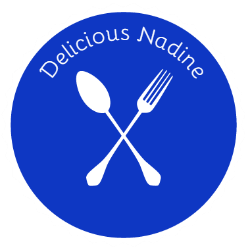Once a year because 1) it's a lot of work, and 2) it's a huge cheesecake, and unless I get other people over to help us eat it, Nick and I will devour the entire thing ourselves.
As my loyal readers know, I held a BBQ last weekend to celebrate the gorgeous weather, and for that occasion I made a pretty fine roast. What I didn't mention was that I also baked a cheesecake. The Bourbon Pumpkin Cheesecake.
It failed completely.
The recipe instructs you to "Invert bottom of a 9-inch springform pan (to create flat bottom, which will make it easier to remove cake from pan), then lock on side and butter pan." Because I only bake the cheesecake once a year, I forget that the inverted bottom will mean that a sugary goo will drip out. I have vague memories of frantically wrapping the oozing pan in tin foil, or putting foil on the bottom of the oven to catch the stuff before it could burn on.
This year, the ooze was particularly virulent. The fire alarm went off. Piercingly. We got it silenced, opened all the windows, turned on some fans.
The alarm went off again. Now the kitchen, the living room, the entire apartment were rapidly filling up with smoke. I looked in the oven. There was a pool of smoking, sugary mess on the oven floor below the cake. I closed the oven, and started fanning smoke out the window.
The fire alarm went off a third time. It's really loud. The ooze had caught fire and was merrily burning. I could see it through the oven window. I paused. Picked up the silicon potholder, and removed the cheesecake from the oven. We were discussing the best way to put out the fire when it went out on its own.
Well. The cheesecake clearly wasn't going back in the oven.
Later, after our guests had left, I cleaned the oven. Thank you baking soda, the greatest cleaning product ever (Non-toxic, cheap, and effective. Yay!). A bit of scrubbing later, the oven was clean. I turned it back on, wrapped the cheesecake pan in foil, and put it in a water bath. No ooze was getting out. But I didn't know how long the cheesecake had been in the oven before, and the top had set slightly as it cooled, so I couldn't use a visual cue to tell me when it was done.
I have a horror of overdone cheesecake. I put it in the oven for a half hour.
The next day, you guessed it -- I cut a small slice before the BBQ started, just to test, and it was woefully raw. This was truly the point at which it was all over, but I refused to accept defeat. I tried microwaving the thing on low power, and then I shoved it in the fridge to chill.
When I checked it again later, still no go. It was cheesecake soup. I don't know exactly why -- whether cheesecake could be further cooked once chilled or not. I did a bit of reading online, and I found some suggestions that had to do with its custard nature. The idea being that once cooked and cooled, the eggs in the custard have formed their shape and won't get raw and reform into a new structure no matter how much heat is applied later. This may or may not be true.
The point is -- it's okay. I baked a cheesecake and it failed. Sure, it's a drag that the cheesecake wasn't available for dessert, but then Vivian and I whipped up some brownies and Dave ran to the store for ice cream and dinner was terrific. Great conversation, great company -- and a great roast.
I believe in cooking fearlessly, even if that means occasional failure. So a cheesecake failed. That was last week. This week the question is whether a sour cherry and almond tart will be superior if made with Frangipane or almond pastry cream. I've got a half recipe of each chilling in the fridge, along with some tart dough. Tonight I bake mini-versions of each for sampling purposes. I've stolen elements from about five different tart recipes for my versions.
And I bet they're going to be delicious.
I try. I have fun. Mostly, my delicious dishes succeed. Every now and then they fail. Then I laugh and move on.
PS. I did salvage a little bit of the cheesecake for Nick. The edges were cooked through, so I cut them off before throwing the cake away. Here's what was left of the fabulous Bourbon Pum
 pkin Cheesecake.
pkin Cheesecake.




